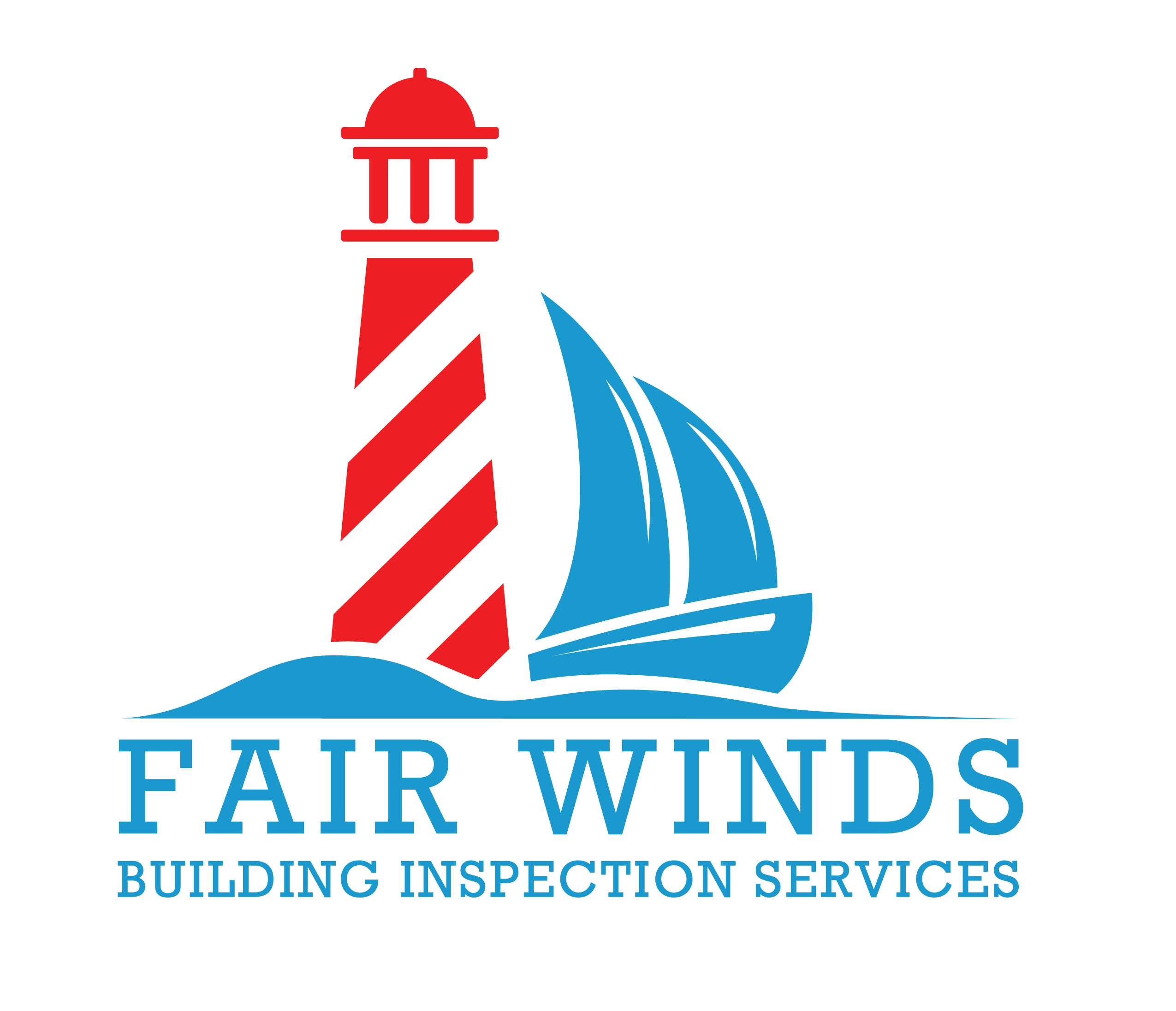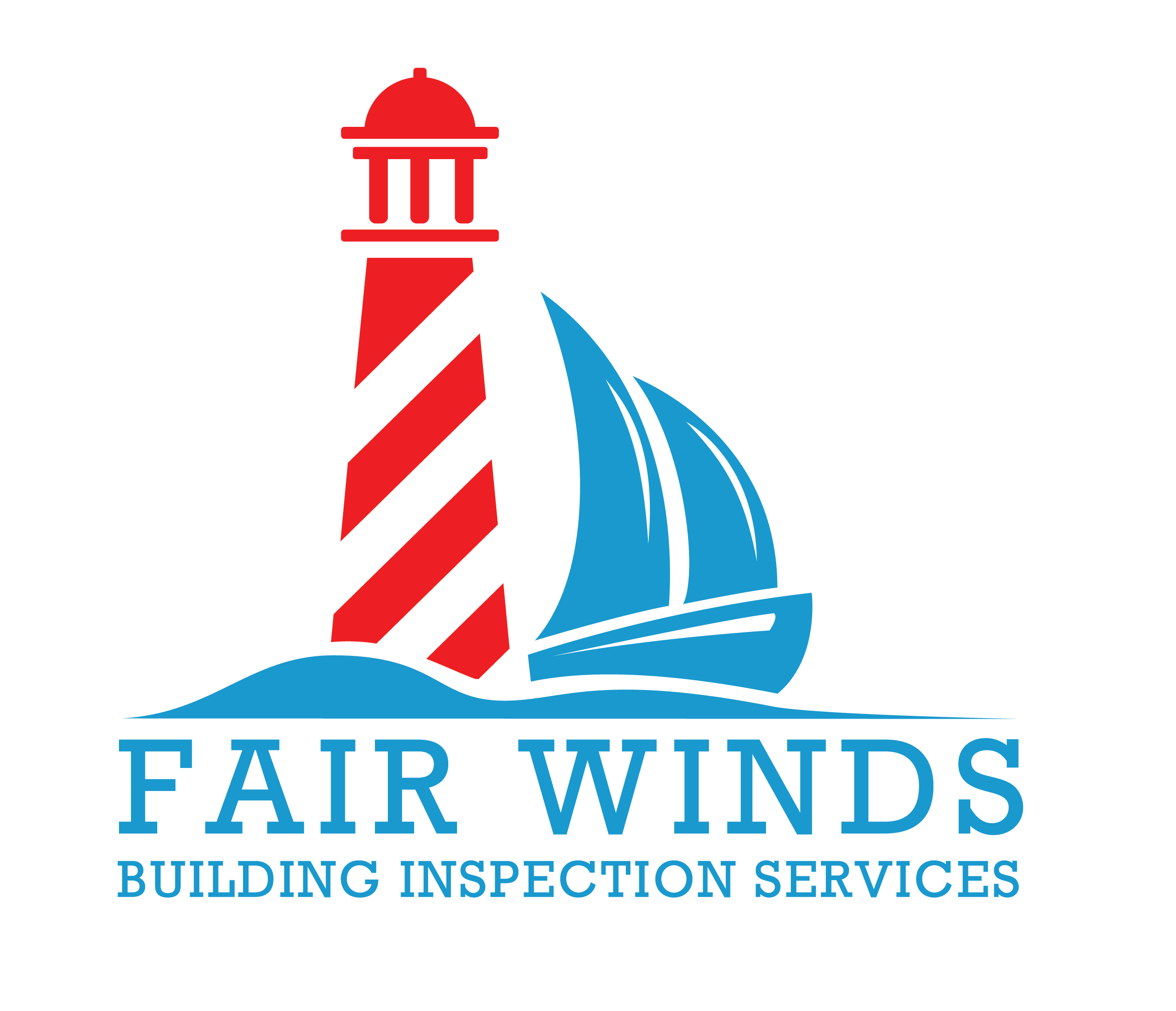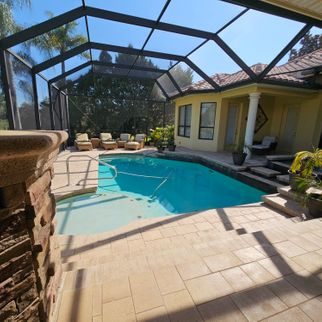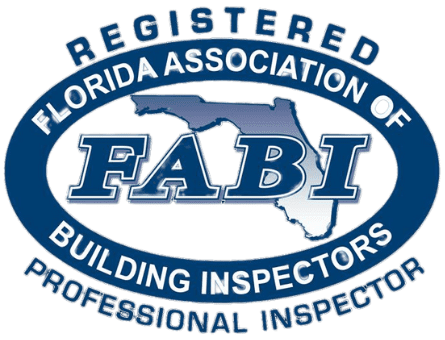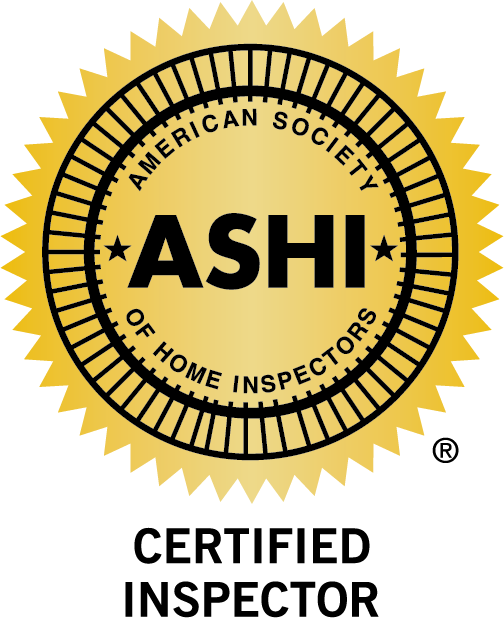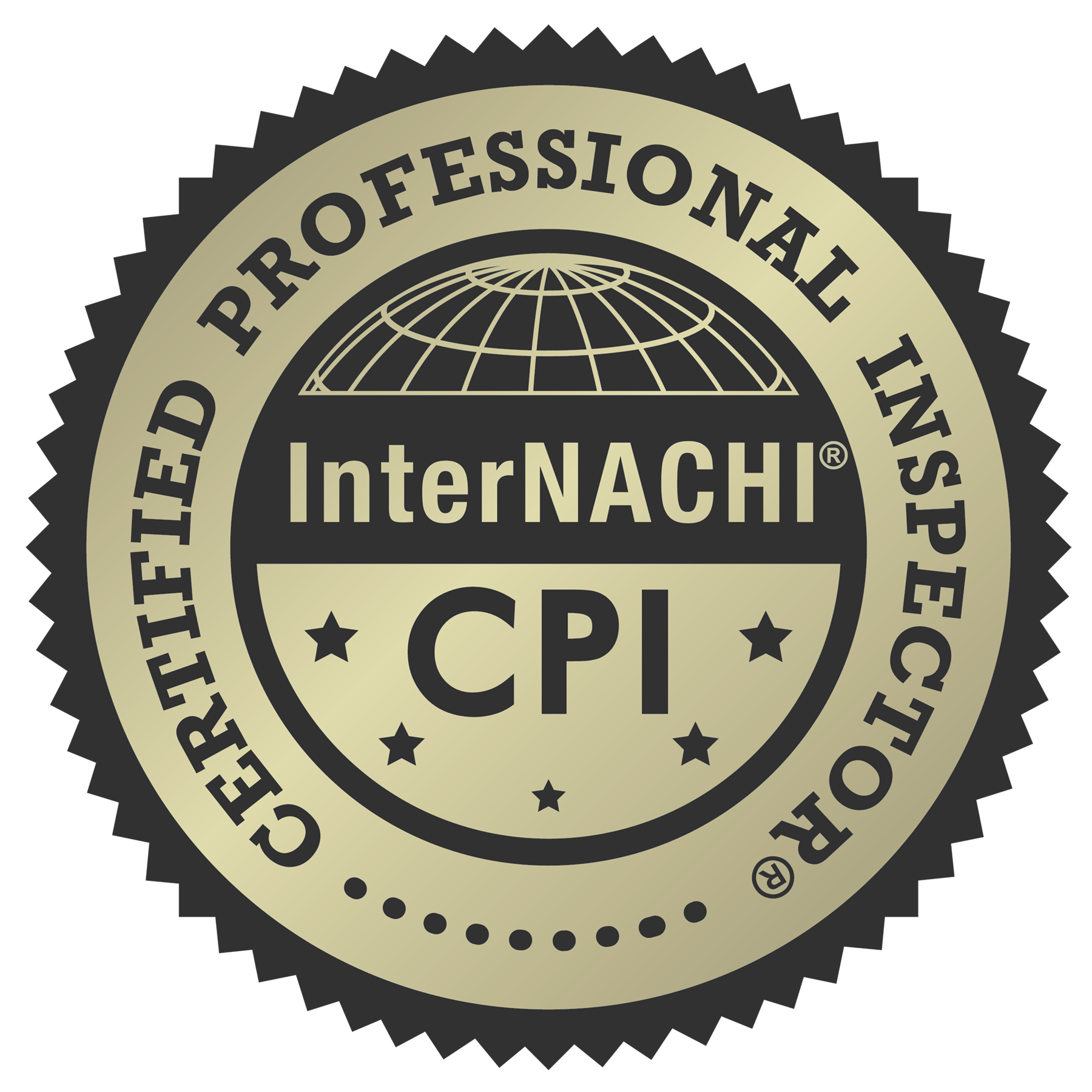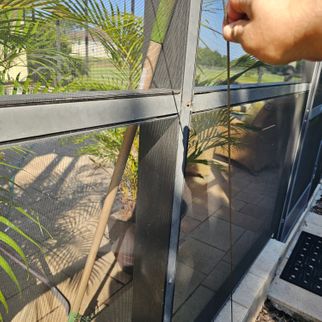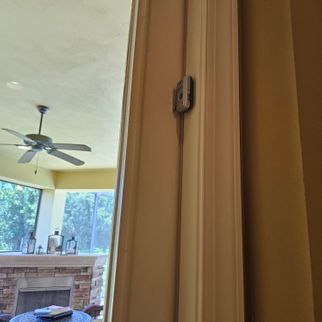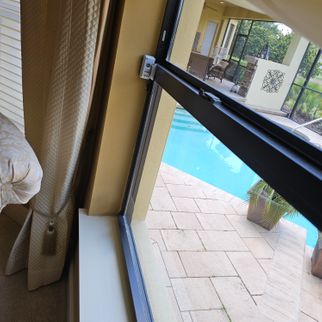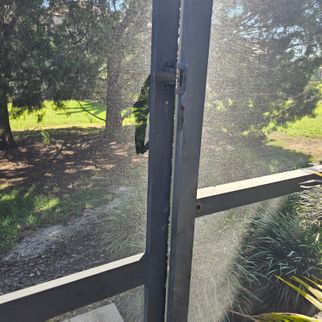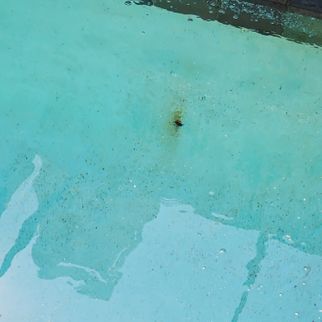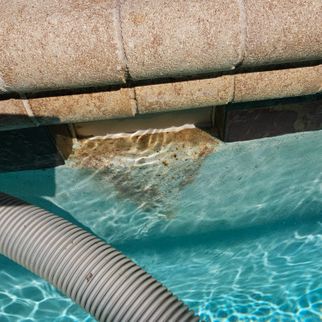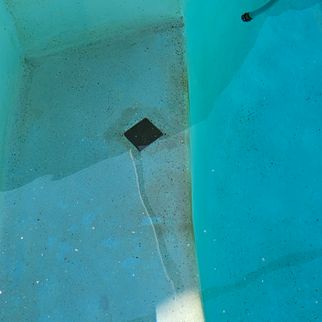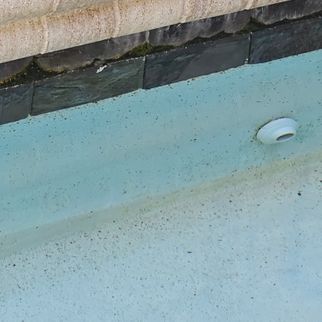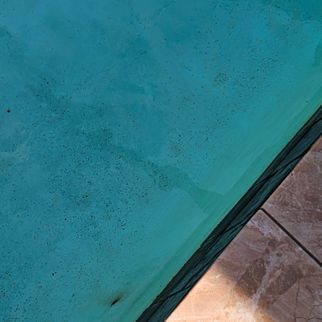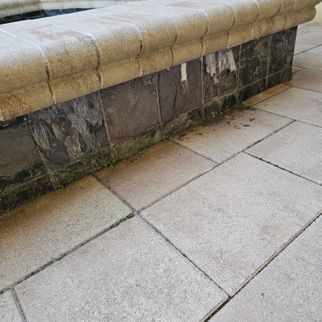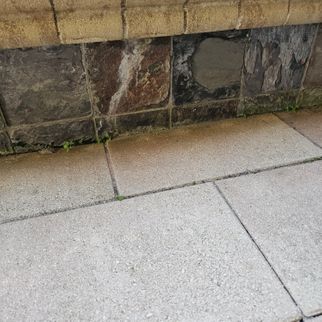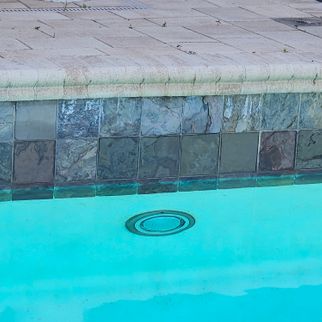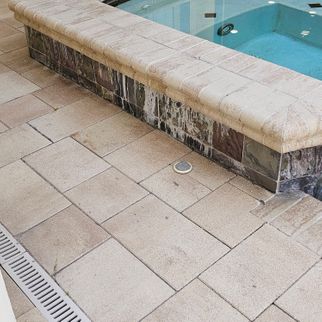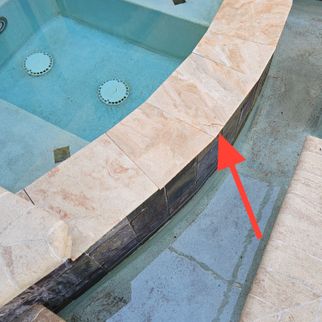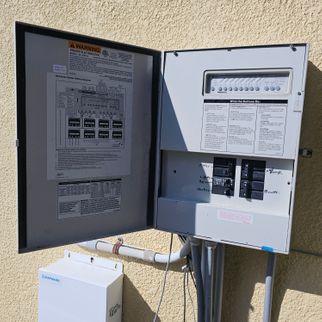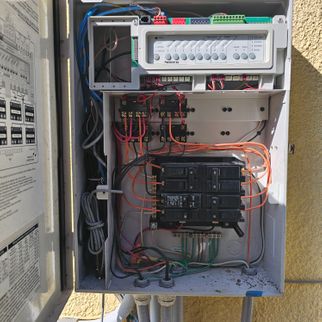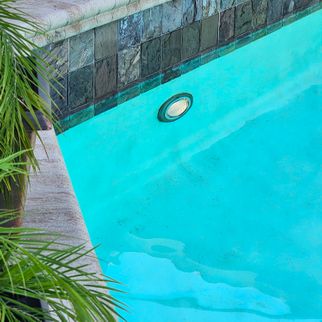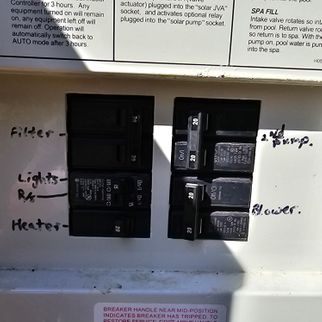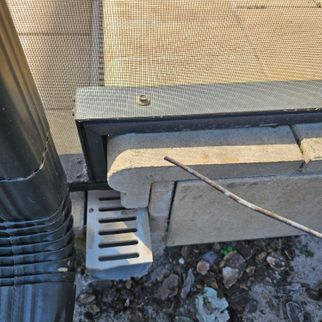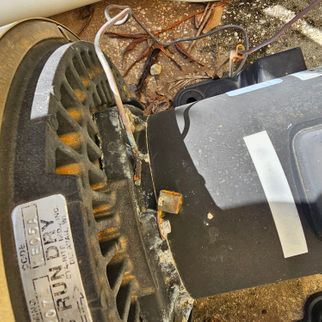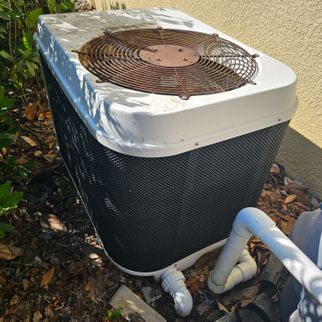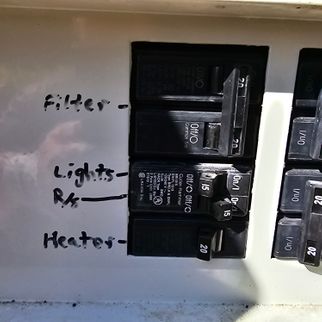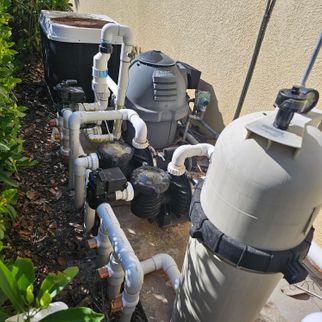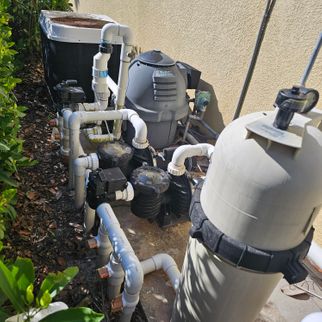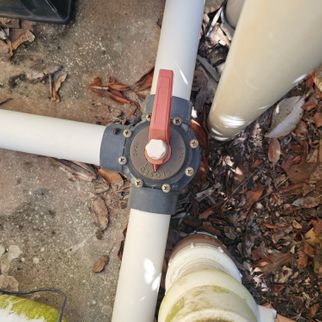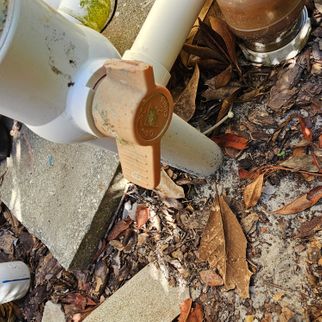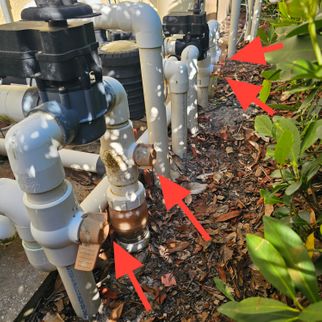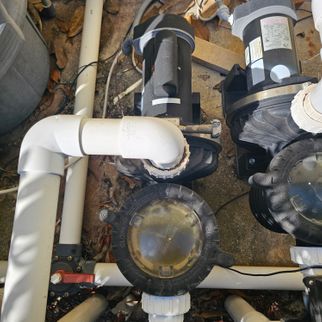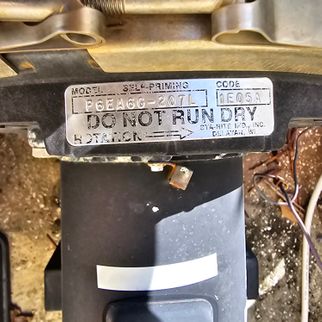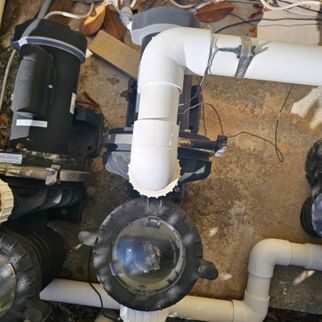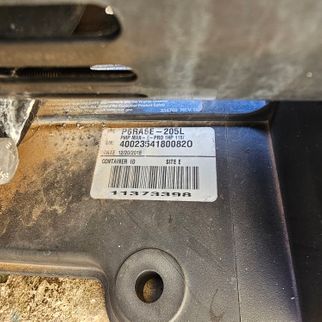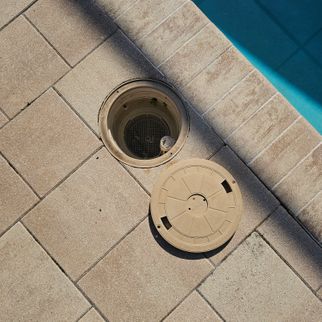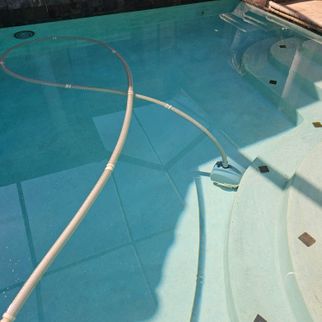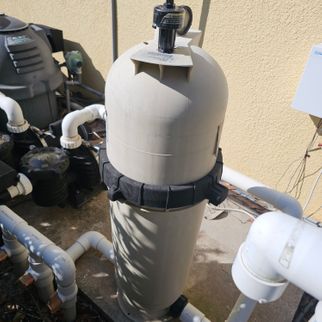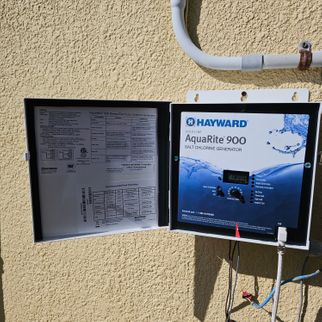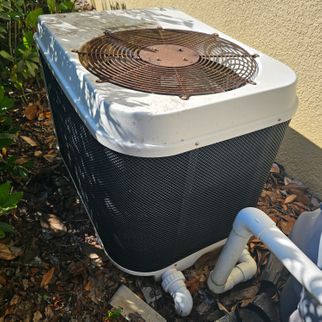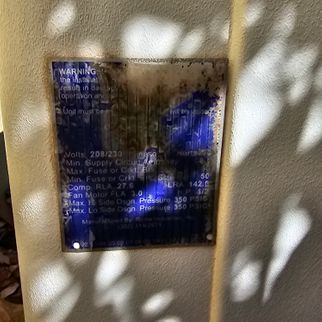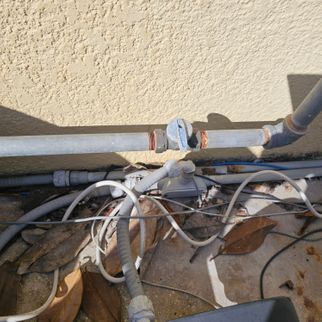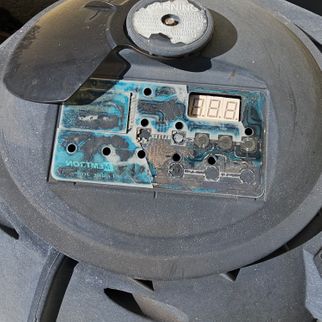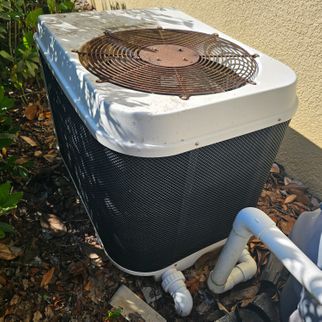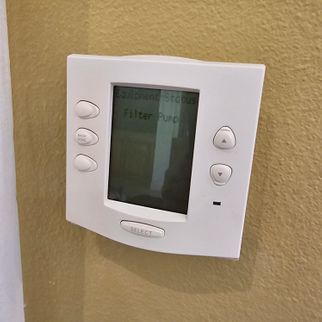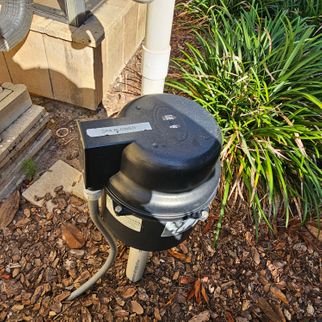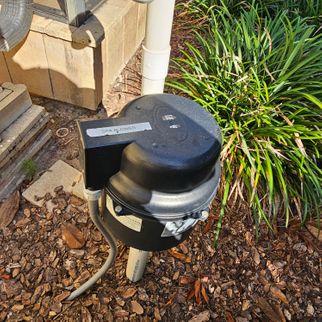Sang Park, License #HI12491, MRSA4846, JE319992
THIS REPORT IS FOR THE EXCLUSIVE USE OF THE CLIENT LISTED ON THIS REPORT. USE BY ANY OTHER PERSONS WITHOUT THE EXPRESS CONSENT OF FAIR WINDS BUILDING INSPECTION SERVICES, LLC. WILL BE A VIOLATION OF A CONTRACTUAL AGREEMENT AND WILL IMMEDIATELY NULLIFY THE REPORT.
The Scope and Purpose
This report outlines the scope and purpose of various inspections offered by Fair Winds Building Inspection Services. In addition to a standard home inspection, some clients may request ancillary inspections, such as a 4-Point Inspection, Wind Mitigation Inspection, or Swimming Pool Inspection. Your inspection may or may not include these ancillary inspections. The specific inspections performed for your property are listed in your agreement and detailed in the main part of this report. If you have any questions about which inspections were conducted, please refer to those sections or contact me directly.
Residential Inspection
The purpose of a home inspection is to help reduce the risk associated with the purchase of a structure by providing a professional opinion about the overall condition of the structure. A home inspection is a limited visual inspection and it cannot eliminate this risk completely. Some homes present more risks than others. I cannot control this, but I try to help educate you about the condition of the property during the inspection process. This is more difficult to convey in a report and one of many reasons why I recommend that you attend the inspection.
This inspection process followed the Florida Department of Business and Professional Regulation Standards of Practice (SOP). The SOP is provided at the end of the report for your reference. There may be comments made in this report that exceed the FL Standards of Practice; these comments (if present) were made as a courtesy to give you as much information as possible about the home. Exceeding the Standards of Practice will only happen when I feel I have the experience, knowledge, or evidence to do so. There should be no expectation that the Standards of Practice will be exceeded throughout the inspection. This inspection and report are not intended to be technically exhaustive. The observations in this report are the opinions of the home inspector. Other inspectors and contractors are likely to have some differing opinions. You are welcome to seek opinions from other professionals.
4-Point Inspection
A “four-point” inspection is a limited visual inspection of the residential structure. A four-point inspection is not exhaustive and is limited to a visual inspection of the four systems and components, which include: 1) the electrical panel and any visible wiring; 2) the plumbing system and any visible pipes; 3) the HVAC system and any visible connections; and, 4) the roof covering and any visible issues. This inspection is not as comprehensive as a full home inspection and is intended only to assess the general condition of these systems.
Wind Mitigation Inspection
A wind mitigation verification inspection is conducted to determine whether a home has specific features designed to withstand strong winds. This inspection is limited to the items listed on the Uniform Mitigation Verification Inspection Form and does not assess other home components. The purpose of this inspection is to verify wind-resistant construction features that may qualify the homeowner for insurance discounts. However, this inspection does not guarantee that a home can withstand severe weather events.
Swimming Pool and Spa Inspection
The purpose of pool and/or span inspection is a) to identify conditions that, in the professional opinion of the Inspector, are significantly deficient or b) to identify systems and components of the pool/spa that are at the end of their service lives in order to help reduce the risk associated with the pool/spa are included in the property. This inspection is a limited visual inspection and it cannot eliminate this risk. Some systems or components present more risks than others. We cannot control this, but we try to help educate you about what we don’t know during the inspection process. This is more difficult to convey in a report and one of many reasons why we recommend that you attend the inspection.
This inspection process followed the American Society of Home Inspectors (ASHI) Standards of Practice (SOP). The SOP is provided at the end of the report for your reference. There may be comments made in this report that exceed the Standards of Practice; these comments (if present) were made as a courtesy to give you as much information as possible about the home. Exceeding the Standards of Practice will only happen when I feel I have the experience, knowledge, or evidence to do so. There should be no expectation that the Standards of Practice will be exceeded throughout the inspection. This inspection and report are not intended to be technically exhaustive. The observations in this report are the opinions of the home inspector. Other inspectors and contractors are likely to have some differing opinions. You are welcome to seek opinions from other professionals.
Wood-Destroying Organism (WDO) Inspection
The Inspector, or a subcontractor, will conduct a visual inspection of the readily accessible areas of the Property, including attics and crawlspaces, where access is permitted at the time of inspection. The inspection may involve probing or sounding in unobstructed and accessible areas to identify any visual evidence of wood-destroying organisms. Wood-destroying organisms include termites, carpenter ants, carpenter bees, powder post beetles, old house borers, and wood-decaying fungi. This inspection does not cover mold, mildew, fungi other than wood-decaying fungi, or other non-insect wood-destroying organisms. The Inspector is not responsible for repairing any damage or treating any infestation.
Additionally, wood-destroying organisms may be present in concealed or inaccessible areas. If the written report states that no visible evidence of wood-destroying organisms was found, it does not guarantee that none exist. Damage may have already begun in areas that were not visible or accessible during the inspection. The inspection will be performed in accordance with Florida Department of Agriculture and Consumer Services standards, as outlined in Chapter 482.226 of the Florida Statutes and Chapter 5E-14.142(2)(c) of the Florida Administrative Code. These regulations include specific limitations, exceptions, and exclusions. If any conflict arises, Florida law will take precedence.
System/Component Update Inspection
This inspection is limited to evaluating the specific items documented in this report to determine whether any visually identifiable deficiencies persist. It does not assess the quality, professionalism, or appropriateness of any repairs made. Repairs to previously identified deficiencies should be performed by licensed and qualified professionals with expertise in addressing the specific issues identified. I recommend that the client obtain copies of all paid receipts and warranties for completed work to verify that the repairs were performed by licensed professionals.
This inspection process followed the Florida Department of Business and Professional Regulation Standards of Practice (SOP). The SOP is provided at the end of the report for your reference. There may be comments made in this report that exceed the FL Standards of Practice; these comments (if present) were made as a courtesy to give you as much information as possible about the home. Exceeding the Standards of Practice will only happen when I feel I have the experience, knowledge, or evidence to do so. There should be no expectation that the Standards of Practice will be exceeded throughout the inspection. This inspection and report are not intended to be technically exhaustive. The observations in this report are the opinions of the home inspector. Other inspectors and contractors are likely to have some differing opinions. You are welcome to seek opinions from other professionals.
Mold Testing
Mold testing is offered as an optional, add-on service to the general home inspection. This service involves the collection of air and/or surface samples from specific, readily accessible areas of the property, as agreed upon prior to testing. Samples are submitted to a certified laboratory for analysis, and the resulting report reflects only the laboratory findings and documented observations made at the time of the inspection. This service is limited in scope and is not intended as a comprehensive mold assessment of the entire structure. It does not include destructive testing, hidden area investigation, full moisture mapping, or remediation protocols unless separately contracted under a written agreement.
The descriptions and observations in this report are based on a visual inspection of the property. I inspect the property without dismantling, damaging, or disfiguring and without moving furniture and interior furnishings. This inspection does not cover certain areas that are concealed, hidden, or inaccessible to view. Some systems cannot be tested during this inspection as testing risks damaging the system or the structure. For example, a heat pump is not generally tested if the outside temperature is above 85 degrees Fahrenheit according to most manufacturers' recommendations. The inspection procedures involved non-invasive investigation and non-destructive testing which would limit the scope of the inspection.
This inspection and report are not intended for city / local code compliance. During the construction process structures are inspected for code compliance by municipal inspectors. Framing is open at this time and conditions can be fully viewed. Framing is not open during inspections of finished homes, and this limits the inspection. All houses fall out of code compliance shortly after they are built, as the codes continually change. National codes are augmented at least every three years for all of the varying disciplines. Municipalities can choose to adopt and phase in sections of the codes on their own timetables. There are generally no requirements to bring older homes into compliance unless substantial renovation is being done.
How to Read This Report
Getting the Information to You
This report is designed to deliver important and technical information in a way that is easy for anyone to access and understand. If you are in a hurry, you can take a quick look at our "Summary Page” and quickly get critical information for important decision making. However, I strongly recommend that you take the time to read the full Report, which includes digital photographs, captions, diagrams, descriptions, videos and hot links to additional information.
The best way to get the layers of information that are presented in this report is to read your report online (the HTML version), which will allow you to expand your learning about your house. You will notice some words or series of words highlighted in blue and underlined – clicking on these will provide you with a link to additional information. The HTML version of this report also contains streaming videos. Short video clips often contain important information and critical context and sounds that can be difficult to capture in words and still pictures.
For the most reliable viewing experience, I recommend viewing the report on as large a screen as practical, as much detail can be lost on small devices like smart phones. For similar reasons, reports should only be printed in color to retain as much detail as possible and minimize misinterpretation of photographs.
This report can also be printed on paper or to a PDF document.
Chapters and Sections
This report is divided into chapters that parcel the home into logical inspection components. Each chapter is broken into sections that relate to a specific system or component of the home. You can navigate between chapters with the click of a button on the left side margin.
Most sections will contain some descriptive information done in black font. Observation narrative, done in colored boxes, will be included if a system or component is found to be significantly deficient in some way or if we wish to provide helpful additional information about the system or the scope of our inspection. If a system or component of the home was deemed to be in satisfactory or serviceable condition, there may be no narrative observation comments in that section and it may simply say “tested,” or “inspected.”
Observation Labels
All narrative observations are colored, numbered and labeled to help you find, refer to, and understand the severity of the observation. Observation colors and labels used in this report are:
- Major Concern:Repair items that may cost significant money to correct now or in the near future, or items that require immediate attention to prevent additional damage or eliminate safety hazards.
- Repair:Repair and maintenance items noted during inspection. Please note that some repair items can be expensive to correct such as re-finishing hardwood floors, but are considered simply repair items due to their cosmetic nature.
- Improve:Observations that are not necessarily defects, but which could be improved for safety, efficiency, or reliability reasons.
- Recommended Maintenance:These are repair items that should be considered "routine home ownership items," such as servicing the furnace, cleaning the gutters or changing the air filters in the furnace.
- Due Diligence:thoroughly investigating the property to ensure there are no hidden issues or surprises.
- Description:Detailed description of various aspects of the property noted during the inspection.
- Limitation:Explanation of inspection limitations
- Note:Refers to a side information and/or any comments elaborating on descriptions of systems in the home.
- SOP:State of Florida Department of Business and Professional Regulation Standards of Practice for home inspection
Summary Page
The Summary Page is designed as a bulleted overview of all the observations noted during inspection. This helpful overview is not a substitution for reading the entire inspection report. The entire report must be read to get a complete understanding of this inspection report as the Summary Page does not include photographs or photo captions.
Property Orientation
All locations of the exterior components were given as if you are standing outside and facing the front of the house. The bedrooms and the bathrooms were numbered, going clockwise from the garage entrance door and/or at the top of the stairs when multiple bedrooms/bathrooms existed on the same floor, i.e. bedroom 1, bedroom 2, and master bedroom.
How to Build a Repair Request
To see how to build a custom PDF summary list, built from any number of items in this report, please review this video. The idea behind this feature is to allow the readers of this report to build their own custom lists. These could be used as a tool for inspection responses, or for requesting re-inspection of specific items or for documenting work that has been completed as part of a pre-listing inspection.
No house is perfect. Anything in these categories should be addressed as soon as possible. Often, a serious problem can be corrected inexpensively. Not all deficiencies will be identified during this inspection. This inspection is not a guarantee or warranty of any kind. Unexpected repairs should still be anticipated. All recommended evaluations, repairs, or replacements shall be done by licensed contractors.
Homeownership is both a joyful experience and an important responsibility, so be sure to call on your Fair Winds Building Inspection Services, LLC to help you devise an annual maintenance plan that will keep your family and your investment safe for years to come. Thank you very much for letting us be of service to you and your loved ones.
Summary
Major Concerns
- SPS-1 Swimming Pool and Spa - Safety Devices::
All doors and windows providing direct access from the home to the pool must be equipped with an exit alarm that has a minimum sound pressure rating of 85 dB A at 10 feet or a limiter that allows opening only 4 inches or less. Recommend installing the alarms or limiters to the doors and windows that provide direct access to the pool.
Refer to the FL Residential Swimming Pool Safety Act section for the safety feature options.
- SPS-2 Swimming Pool and Spa - Safety Devices::
The self-closing device on the door did not function as intended. All doors that provide direct access to the pool should be equipped with a self-closing and self-latching device. I recommend adjusting or replacing the self-closing device.
Repairs
- SPS-3 Swimming Pool and Spa - Vessel Surface::
The vessel surface was chipped and worn out. Recommend consulting with a licensed pool installation contractor to discuss the options and the costs to resurface the vessel.
- SPS-4 Swimming Pool and Spa - Pool Electrical::
The pool heater, pool pump and Screen Enclosure were not connected to the bonding system. Recommend correction by a licensed electrician.
- SPS-5 Swimming Pool and Spa - Pool Plumbing::
Air bubbles were coming out of what appeared to be one of the supply ports in the pool. Recommend further evaluation to determine the cause of air bubble formation and repair.
- SPS-6 Swimming Pool and Spa - Heating::
The pool heater did not respond to the control. Recommend further evaluation and repair/replace as needed by a licensed pool maintenance contractor.
- SPS-7 Swimming Pool and Spa - Spa Controls::
The spa air injection or "bubbler" is not working properly and should be repaired or replaced as needed.
Swimming Pool Inspection
Swimming Pool and Spa
General
Type of Pool/Spa: Inground Pool and Spa
Pool and Spa Safety Information:
For up to date pool safety recommendations go to the following:
and
and
Florida Statute directs pool/spa owners to install at least 1 of the 5 safety features are present for all new residential swimming pools, spas, and hot tubs.
To keep pool equipment in optimal condition, regular maintenance is essential. Consistently removing debris from the skimmer and pump baskets helps prevent clogs and ensures efficient operation. Maintaining proper water chemistry by testing and balancing pH, alkalinity, and sanitizer levels at least once a week prevents corrosion and scale buildup. Filters should be cleaned or backwashed as recommended by the manufacturer to maintain filtration efficiency. Regular inspections of the pump and motor for leaks, unusual noises, or vibrations, along with proper lubrication if applicable, can help extend their lifespan. Pool heaters should also be checked periodically for corrosion, leaks, or blockages to ensure effective heating. During the off-season, balancing water chemistry, cleaning thoroughly, draining equipment, and using a protective cover helps safeguard the system from damage caused by debris and harsh weather conditions.
Given the complexity and variety of pool systems, it's advisable to consult with the seller or a professional pool technician to gain a comprehensive understanding of your specific pool equipment's operation and maintenance needs. This proactive approach can prevent potential issues and extend the lifespan of your pool components.
This inspection was limited to verifying whether the various components of the pool equipment were operational at the time of inspection. I did not assess the efficiency, performance, or longevity of any components, as such evaluations are beyond the scope of this inspection and require specialized training and equipment. A licensed pool maintenance technician should be consulted to conduct a full performance assessment and determine if any repairs or upgrades are necessary.
Pool Enclosure:
Inspection Status: Inspected
Type: Screen
Safety Devices:
Inspection Status: Inspected
Pool Barriers:: Perimeter yard fencing
Perimeter yard fencing Screen enclosure
Screen enclosure Mesh Fence
Mesh Fence Self-closing and self-latching gate
Self-closing and self-latching gate Self-closing and self-latching door
Self-closing and self-latching door Door alarm
Door alarm Window alarm
Window alarm Window limiter
Window limiter None
None
All doors and windows providing direct access from the home to the pool must be equipped with an exit alarm that has a minimum sound pressure rating of 85 dB A at 10 feet or a limiter that allows opening only 4 inches or less. Recommend installing the alarms or limiters to the doors and windows that provide direct access to the pool.
Refer to the FL Residential Swimming Pool Safety Act section for the safety feature options.
The self-closing device on the door did not function as intended. All doors that provide direct access to the pool should be equipped with a self-closing and self-latching device. I recommend adjusting or replacing the self-closing device.
Vessel Surface:
Inspection Status: Inspected
Interior Finish Material:: Plaster/Gunite
Pool Area Coping, Tile and Decking:
Inspection Status: Inspected
Decking Type:: Paver
Coping Type:: Tile, Pavers
I observed damaged tile in/around the pool. I recommend repair by a licensed pool contractor.
Pool Electrical:
Inspection Status: Inspected
Circuit Breaker Location: Sub panel
Equipment Bonding: None
GFCI Protection: None
Wiring Type: Copper
No Ground Fault Circuit Interrupter (GFCI) protection of electrical outlets was provided in the bathroom at the time of inspection. Although this condition may have been commonly considered safe or acceptable at the time the home was originally built, generally accepted safe building practices recommends GFCI be installed in these areas to protect the occupants. Recommend GFCI be installed by a licensed electrical contractor for the enhanced safety.
The pool heater, pool pump and Screen Enclosure were not connected to the bonding system. Recommend correction by a licensed electrician.
Pool Plumbing:
Checking for the leak in the pool plumbing system is limited to the inspection of the equipment, piping, and valve above the ground. Checking for the leak on the subsurface plumbing system is beyond the scope of the inspection and was not performed. If desired, a qualified contractor/ licensed professional can be retained to perform a detailed evaluation and to make any repairs necessary.
Air bubbles were coming out of what appeared to be one of the supply ports in the pool. Recommend further evaluation to determine the cause of air bubble formation and repair.
Control Valves:
Cleaning:
Heating:
I could not observe the temperature difference before and after the heater was turned on for the given amount of the inspection time. Recommend having a licensed pool maintenance contractor test the performance of the pool heater.
Drains:
Inspection Status: Inspected
Drain Type(s): Anti-Entrapment Drains, Multiple Drains
The age of the drain cover was not verified at the time of the inspection. Most manufacturers recommend replacing the drain cover in 7 years or less. Recommend replacing the drain cover for the added safety.
Standards of Practice
AMERICAN SOCIETY OF HOME INSPECTORS
AUXILIARY STANDARDS OF PROFESSIONAL PRACTICE FOR RESIDENTIAL SWIMMING POOL AND SPA INSPECTIONS
1. INSPECTION PURPOSE AND SCOPE
1.1 The purpose of these Standards of Professional Practice (Standards) is to establish a uniform standard for inspectors who voluntarily use these Standards when performing residential swimming pool/spa inspections.
1.2 Inspections performed in accordance with these Standards:
A. provide the client with additional objective information about the condition of inspected components at the time of the inspection;
B. are conducted by an inspection generalist, not by a technical specialist;
C. are general and do not include or confirm conformity with:
1. building codes and other governmental laws and regulations,
2. manufacturer’s installation instructions,
3. construction plans, drawings, and specifications;
D. do not provide a warranty or guarantee regarding the condition of the inspected swimming pools/spas;
E. do not identify and report all possible safety issues regarding the installation, operation, maintenance, and use of inspected swimming pools/spas.
1.3 These Standards do not limit inspectors from:
A. including other services or components in addition to those required in these Standards;
B. excluding components from the inspection if requested by the client.
1.4 Inspectors who perform inspections in accordance with these Standards shall adhere to the ASHI® Code of Ethics For the Home Inspection Profession.
1.5 These Standards apply only to swimming pools/spas located on property containing a one or two-family residential structure. These standards do not apply to swimming pools/spas used for commercial or competitive uses.
2. INSPECTION AND REPORT
2.1 Inspectors shall inspect readily accessible, visually observable, installed components designated in these Standards.
2.2 Inspectors shall issue a written report that:
A. identifies components that, in the professional judgment of the inspector, are not functioning properly, significantly deficient, unsafe, or are near the end of their service lives;
B. provides the reasoning or explanation as to the nature of the deficiencies reported in 2.2.A, that are not self-evident;
C. recommends correction, further evaluation, or monitoring of components identified in 2.2.A;
D. identifies components designated for inspection in these Standards that were present during the inspection but were not inspected and the reason(s) why they were not inspected;
E. includes the statement from Appendix A in its entirety and without change in every report issued using these Standards.
3.0 SWIMMING POOL AND SPA INSPECTION
3.1 Inspectors shall:
A. inspect:
1. the visible parts of interior finish materials,
2. the visible parts of decks, steps inside the swimming pool/spa shell, and coping,
3. the visible parts of pumps, motors, blowers, skimmer, filters, drains, heaters, automatic safety controls, gauges, visible piping and valves, conduit,
4. cross connections in the water supply system,
5. external bonding of the pump motors, blowers, heaters and other components that are required to be bonded,
6. operation of readily accessible lights, ground fault circuit interrupters, electrical components, and timer assemblies that are related to the pool or spa,
7. the visible parts of permanently installed handrails and ladders,
8. for the presence of safety barriers and alarms,
9. for the presence of entrapment prevention components,
10. vegetation, grading, surface drainage, and retaining walls that are likely to adversely affect the swimming pool or spa;
B. describe:
1. type of swimming pool/spa,
2. interior finish materials,
3. type of filter,
4. types of safety barriers,
5. type of cleaning system (if present),
6. energy source for heater (if present);
C. operate the systems using normal operating controls;
D. open readily openable access panels.
3.2 Inspectors are not required to:
A. test, operate, or evaluate components when weather conditions or other circumstances may cause equipment damage;
B. test, operate, or evaluate automatic safety controls and manual or automatic valves;
C. touch swimming pool/spa water to examine the structure, components, and features, including their composition and quality;
D. test, operate, or evaluate electric resistance heaters;
E. determine structural integrity;
F. inspect any equipment or component that is shut down or that is not responding to normal operating controls, including conditions caused by the absence of a required energy source such as electricity or gas;
G. inspect, test, operate, or evaluate: low voltage or electronic controls, water chemistry or clarity, out-of-level conditions, presence or absence of bacteria/algae, backwash functions, aerators, automatic cleaning systems, automatic water fill systems, water treatment systems, chemical dispensers, thermostats, heating elements, heat exchangers, solar and other alternative energy heating systems, water features, covers and related components, accessories, leaks in shell, underground components, temporary safety barriers and alarms, stray voltage, and the interior of filters including filter cartridges;
H. inspect, test, operate, or evaluate diving and jump boards, slides, play equipment and similar components; and the suitability of the pool for the use of such components and for activities such as diving; and
I. determine the adequacy of: system or component design, structural components, equipment and component compatibility, flow rates, high or low pressure conditions, filters, heaters, safety barriers and alarms, and entrapment prevention components.
4. GENERAL LIMITATIONS AND EXCLUSIONS
4.1 General Limitations
A. Inspectors are not required to perform any action or make any determination not specifically required in these Standards.
B. Inspections performed in accordance with these Standards are not:
1. numerically complete, and
2. required to identify or to report concealed conditions, latent defects, and consequential damages, and cosmetic issues.
4.2 General Exclusions
A. Inspectors are not required to determine:
1. condition of components that are not installed or that are not visible and readily accessible;
2. strength, adequacy, effectiveness, or efficiency of any component, including structural components;
3. methods, materials, or costs of corrections;
4. future conditions including, but not limited to, component failure and the life expectancy of components;
5. the suitability of a swimming pool/spa or of a component for any specialized use;
6. the presence or absence of any environmental hazards including, but not limited to, toxins, allergens carcinogens, electromagnetic radiation, noise, radioactive substances, and contaminants in soil, water, and air;
7. the presence or absence of potentially hazardous or damaging plants and animals including, but not limited to, wood destroying organisms and diseases harmful to humans including molds and mold-like substances;
8. operating costs of components;
9. acoustical properties of any component;
10. soil conditions relating to geotechnical or hydrologic specialties;
11. causes of or reasons for the condition of components identified in 2.2.A;
12. the safety of using the swimming pool/spa or any component;
13. the risks or benefits of adding new components and of modifying existing components;
14. whether the swimming pool/spa or any component is free from leakage of any kind;
15. whether any item, material, condition or component is subject to recall, controversy, litigation, products liability or other adverse claim or condition;
16. the adequacy of operation, maintenance, and use of the swimming pool/spa and of any component.
B. Inspectors are not required to:
1. perform any act or service contrary to law or regulation;
2. perform architectural, engineering, or surveying services or to confirm or evaluate such services performed by others;
3. perform any trade or any professional service other than as required in these Standards;
4. offer or provide warranties or guarantees of any kind;
5. perform any procedure or operation or enter any area that may, in the opinion of the inspector, be dangerous to the inspector or to other persons, or that may cause damage to the property or to components;
6. move personal property, equipment, plants, soil, snow, ice, or debris;
7. inspect installed decorative items;
8. inspect component interiors that are not readily accessible; and
9. dismantle any component, except as explicitly required by these Standards.
GLOSSARY OF ITALICIZED TERMS
Alarm See safety barrier
Automatic safety controls Devices designed and installed to protect components from unsafe conditions
Client A person who hires an inspector to perform an inspection in accordance with these Standards
Component A primary part of a functionally related group that works together as a system, not including ancillary parts, such as signage and depth markers, that do not contribute to the intended function of the system
Coping The decorative material around the perimeter above a swimming pool/spa, usually located just above the tile
Cosmetic issues Defects that are superficial and that do not significantly affect a component’s ability to function properly
Cross connection Any connection between two otherwise separate piping systems whereby there may be a flow from one system to another
Decorative Ornamental; not required for the proper operation of the swimming pool/spa components
Describe To identify (in writing) a component by its type or by other distinguishing characteristics
Dismantle To take apart or remove any component, device, or equipment that is bolted, screwed, or fastened by other means and that a homeowner would not take apart or remove in the course of normal household maintenance
Electronic controls Digital, computerized or solid state equipment operation management devices
Entrapment prevention component A component, such as a suction outlet cover, installed within the swimming pool/spa water circulation system that helps prevent a person from being held underwater at a suction outlet
Further evaluate Examination and analysis by a qualified professional, tradesman, or service technician using techniques and/or expertise that are beyond the scope of inspections performed in accordance with these Standards
Inspect To visually examine components in accordance with these Standards, using normal operating controls and opening readily openable access panels
Inspector A person who is hired by a client to inspect a swimming pool/spa in accordance with these Standards
Installed A component that is connected or set in position and prepared for use
Normal operating controls Devices such as thermostats and switches intended to be operated by the homeowner
Numerically complete An inspection that inspects every individual occurrence of a component
Readily accessible A component that is located where access will not involve risk to persons or property, and that is visible without: (1) moving matter of any kind, and (2) using tools, and (3) using a ladder taller than twelve feet
Readily openable access panel A panel provided for homeowner inspection and maintenance that is readily accessible, within normal reach, can be removed by one person, and is not sealed in place
Safety Freedom from danger, risk, or injury
Safety barrier a component, such as a fence or a door or a window alarm, that helps restrict access to a swimming pool/spa
Shut down A state in which a system or component cannot be operated by normal operating controls
Structural component A component that supports non-variable forces or weights (dead loads) and variable forces or weights (live loads)
Swimming pool/spa A contained body of water eighteen inches or more in depth at any point and intended for swimming or immersion
Technical specialist A person who, by reason of training, education, and experience, has expertise in a specific trade or profession that is beyond that of an inspector, and who might, by reason of this expertise, or by the use of specialized tools, instruments, measurements, testing, calculations, or other means discover issues not discovered by an inspector
Unsafe A condition in a readily accessible, installed system or component that, in the professional judgment of the inspector, presents a significant risk of bodily injury during normal, day-to-day use. The risk may be due to damage, deterioration, improper installation, or a change in accepted swimming pool/spa construction methods.
IMPORTANT NOTICE
The American Society of Home Inspectors, Inc. (ASHI) does not verify the qualifications of inspectors who use these Standards and has no authority or control over the quality of inspections undertaken or performed using these Standards. These Standards are general in nature and are not intended to in any way discourage or limit additional or more detailed inspections. ASHI disclaims all liability for any and all personal and bodily injuries and damages, including but not limited to incidental and consequential damages, which may occur as a result of inspections performed using these Standards. No warranty, expressed or implied, is intended or offered by ASHI in the use of these Standards. ASHI assumes no risk and makes and implies no representations of any kind to inspectors, consumers, or others.
